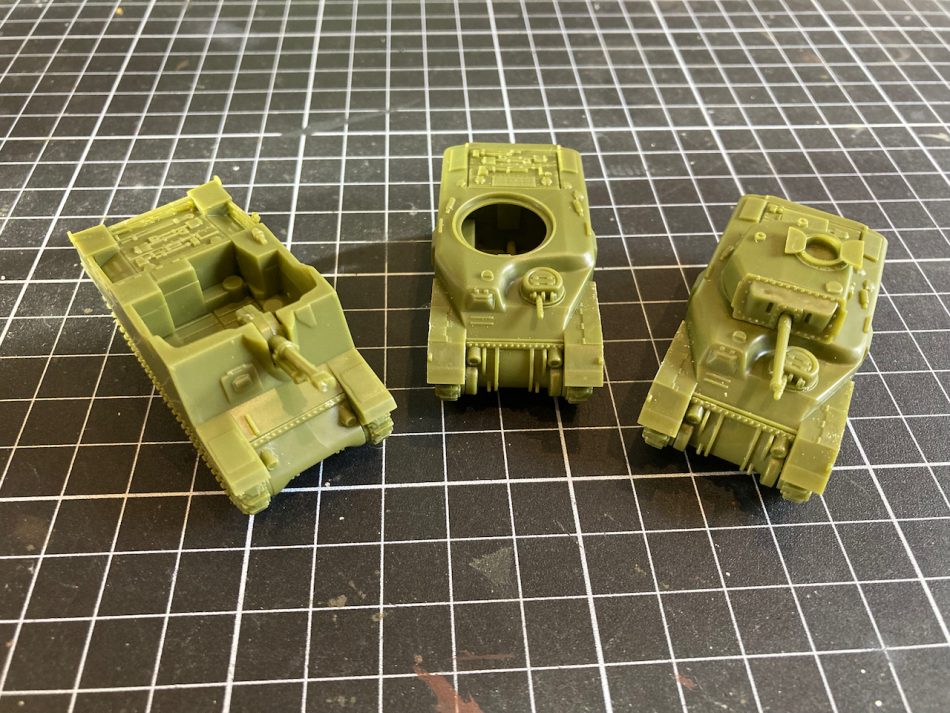Flames of War Sexton/Ram Kit Review
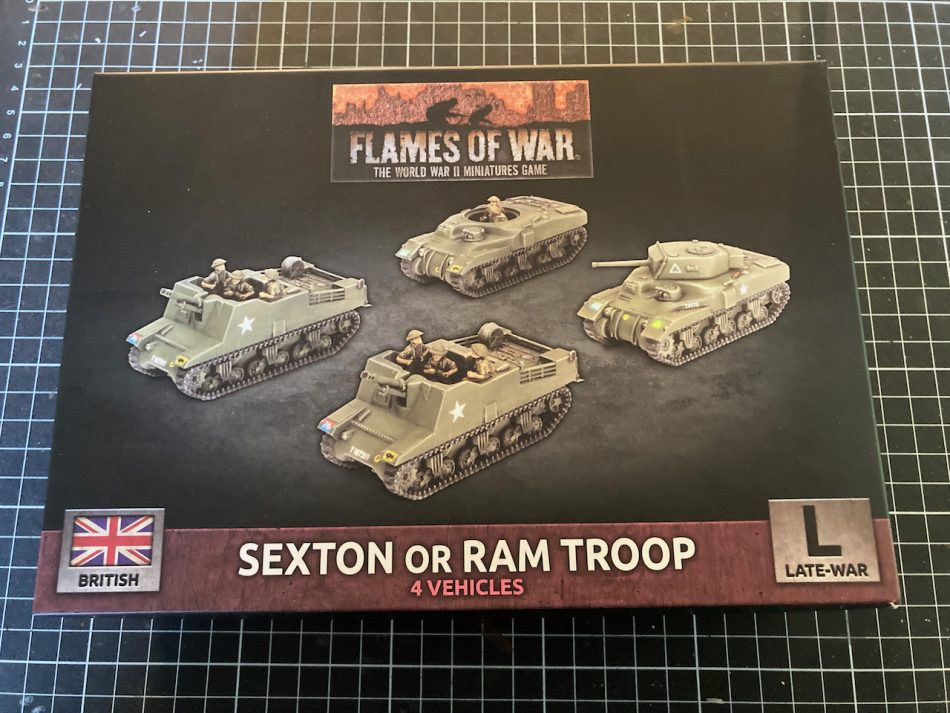
By Richard Steer
One of the most enjoyable parts of the current Flames of War release cycle has been the new plastic kits that Battlefront has developed. A number of new kits have been released for Bulge: British, including a box that covers the Sexton self-propelled gun, the Ram tank, and the Ram Kangaroo armored personnel carrier. I have a bit of a soft spot for the Kangaroo, so I recently picked up the box in order to add some to my Late-War British.
The box can build four vehicles, and contains two sprues per vehicle. The first sprue has all of the components needed to build a Sexton, specifically the Sexton Mk II.
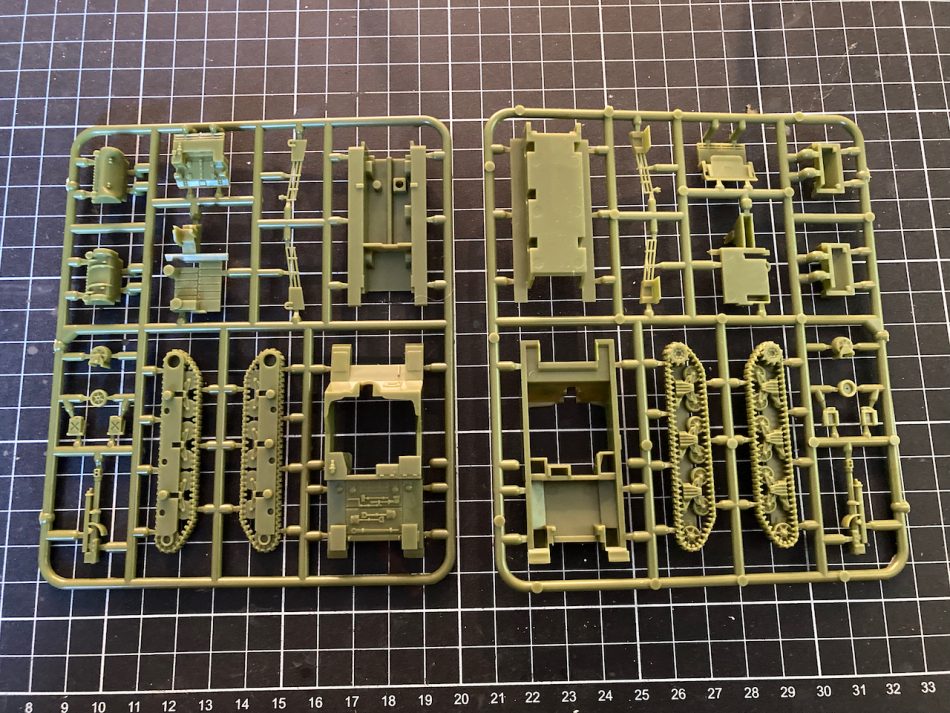
The second sprue adds the additional parts needed to build a Ram tank or Kangaroo armored personnel carrier. This is the mid-production Mark II version of the Ram, with the distinctive features being a small auxiliary machine-gun turret, no side hatches in the hull, a 6pdr gun, and the Grizzly tank (Canadian-built M4A1) bogies on the track pieces from the other sprue.
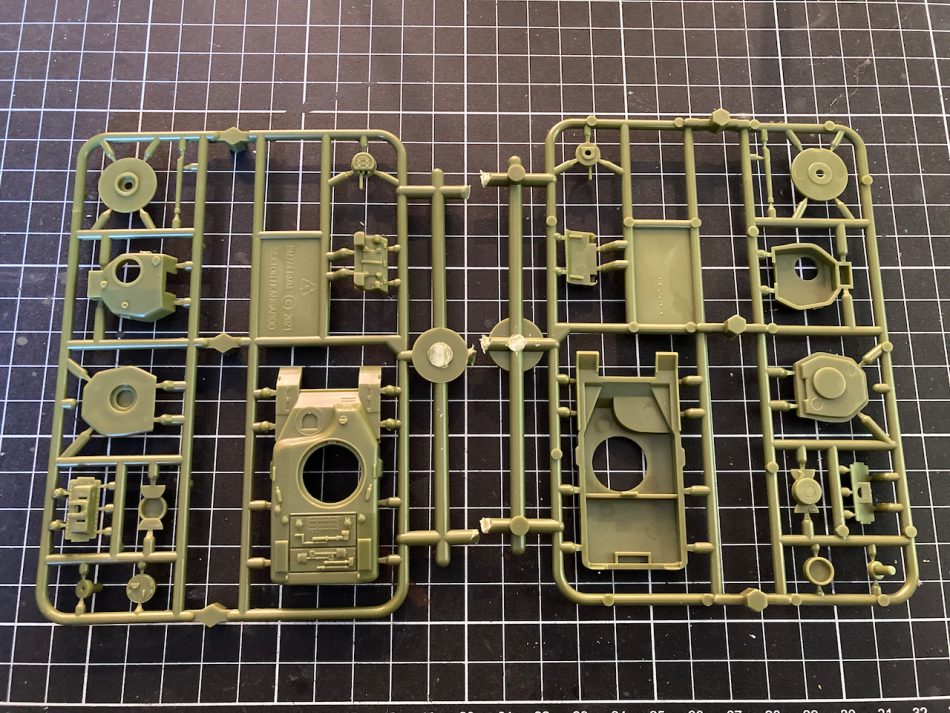
The kit comes with two options for transmission covers. One represents the early three-piece bolted cover that can be used for either the Ram, Kangaroo, or Sexton. The later single-piece cover is only suitable for the Sexton.
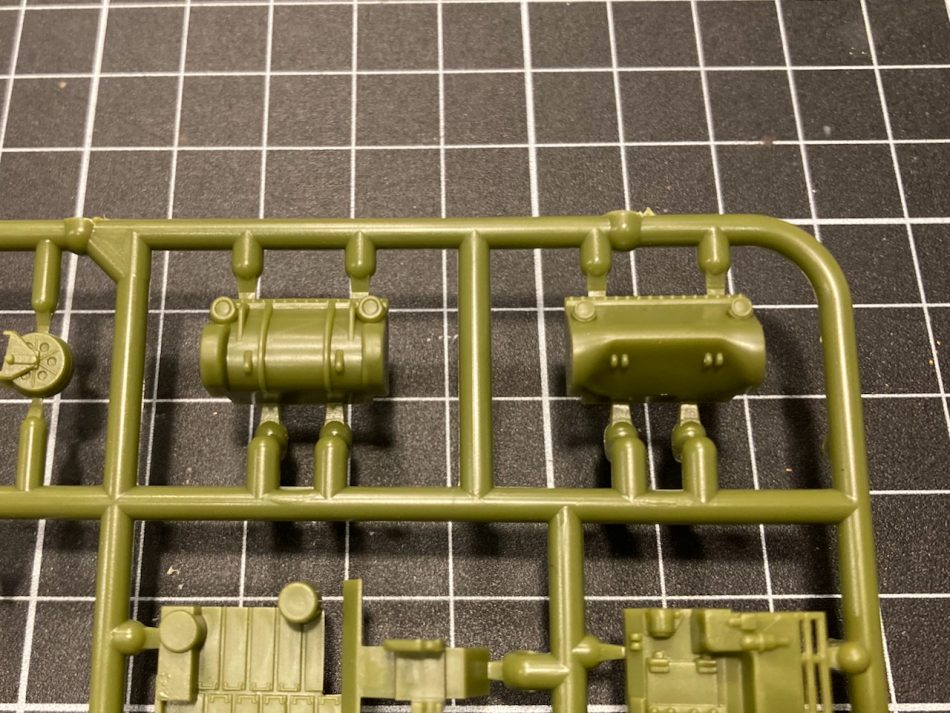
One of the potential points of weakness on the Sexton, as a gaming piece subject to a lot of handling, is the railings around the engine deck. Battlefront gets around this by molding them as part of a larger piece. The rear railing is attached to the hull rear, while the side railings are part of a piece that includes the side and top of the battery boxes on the engine deck. The result feels sturdy and unlikely to break during use.


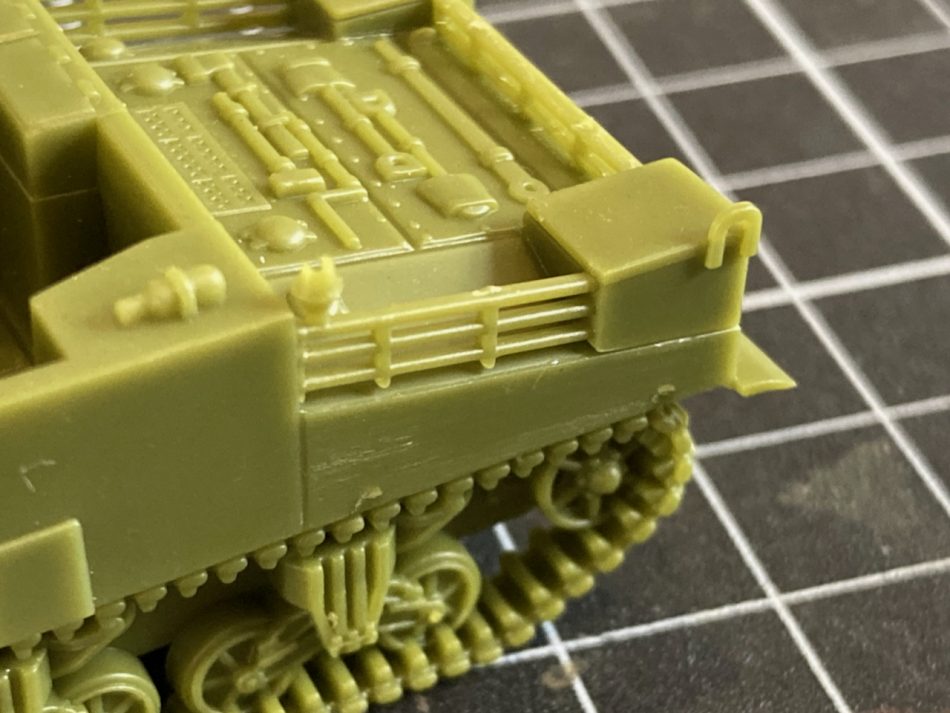
Once built, the Sexton has some basic internal detail, but significantly less than the Plastic Soldier Company kit of the same subject.
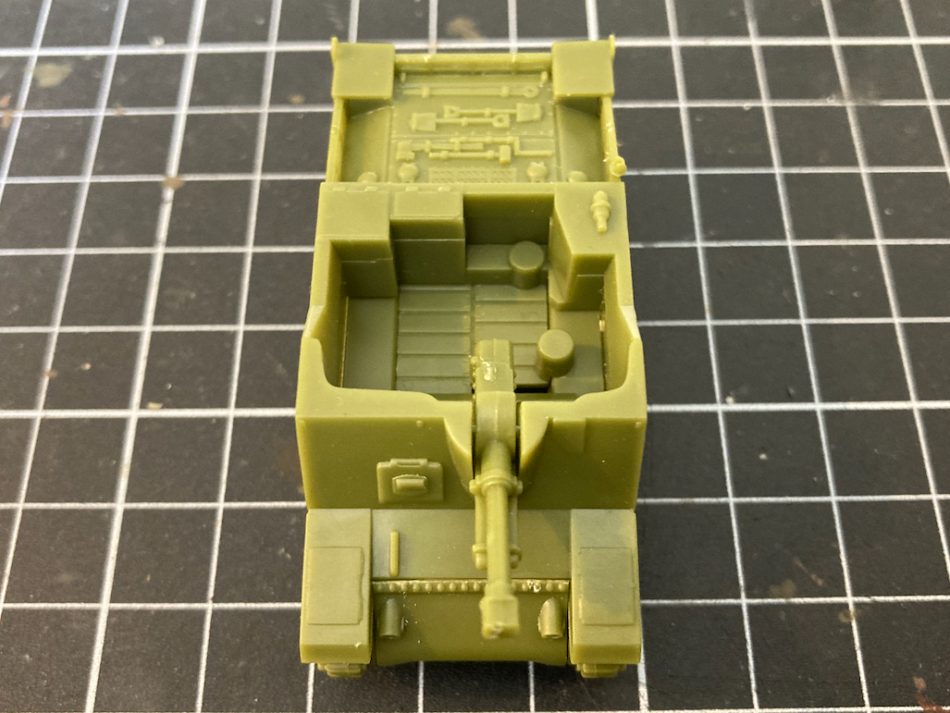
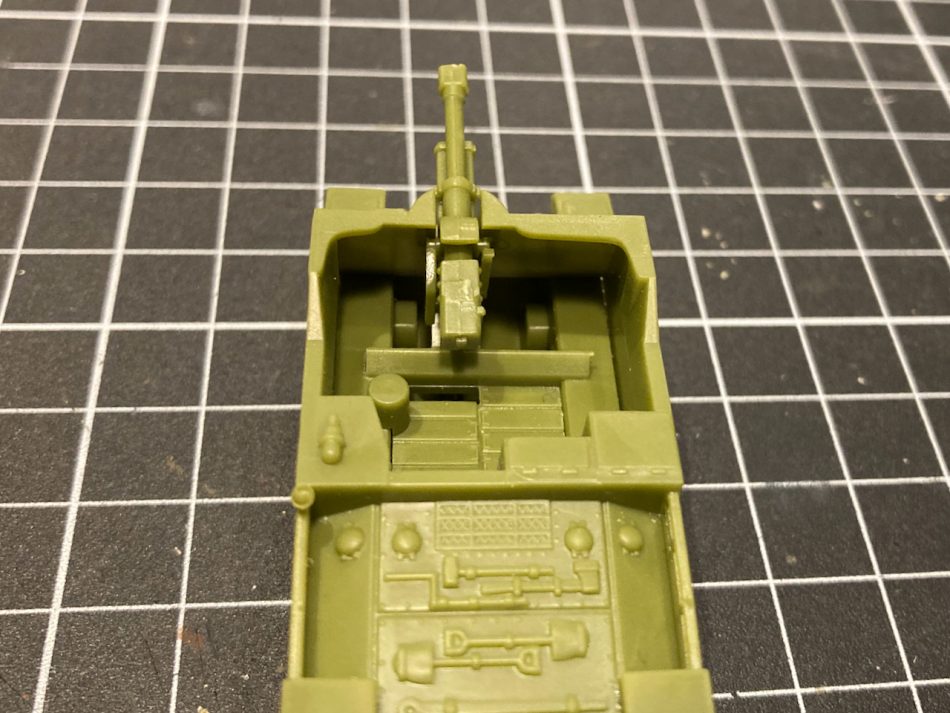
When built as a Kangaroo, the only internal detail is a basic representation of the drive shaft that runs down the middle of the hull floor. There are a few detractions. The center locator hole for the right-hand track encroaches into the crew compartment. The driver’s seat is modeled as a square block with a hole in it, and looks like it is out of alignment with the driver’s compartment. These issues may not be visible once the passenger figures are added.

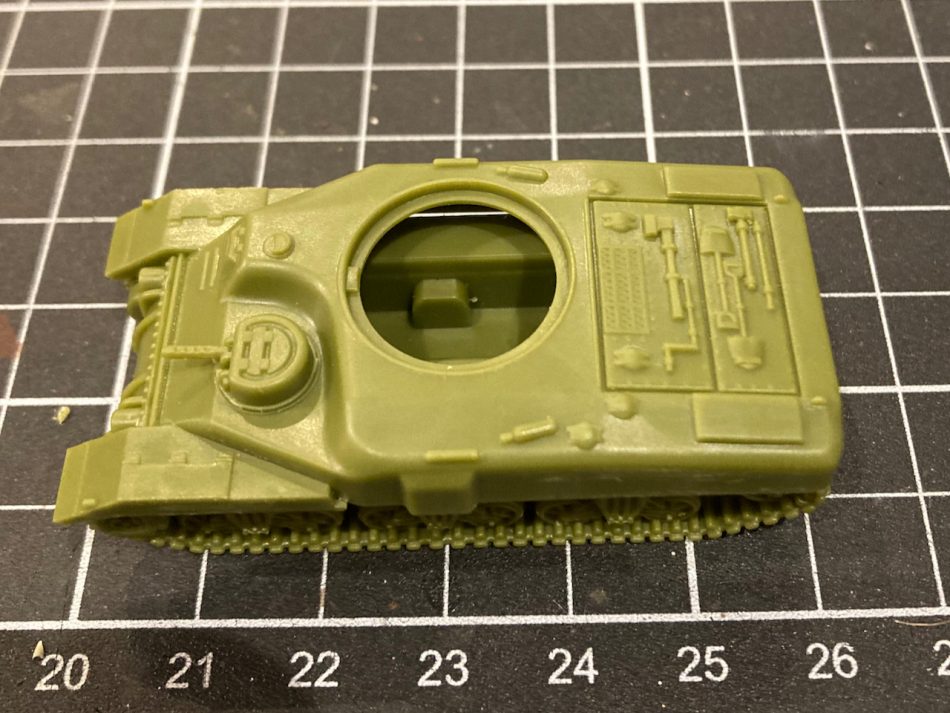
The Ram turret sits on a plate that fits into the opening in the hull. As is standard with Battlefront’s plastic kits, there are recesses for 5mm x 1mm magnets (not included) as an alternative to using the kit’s turret peg.
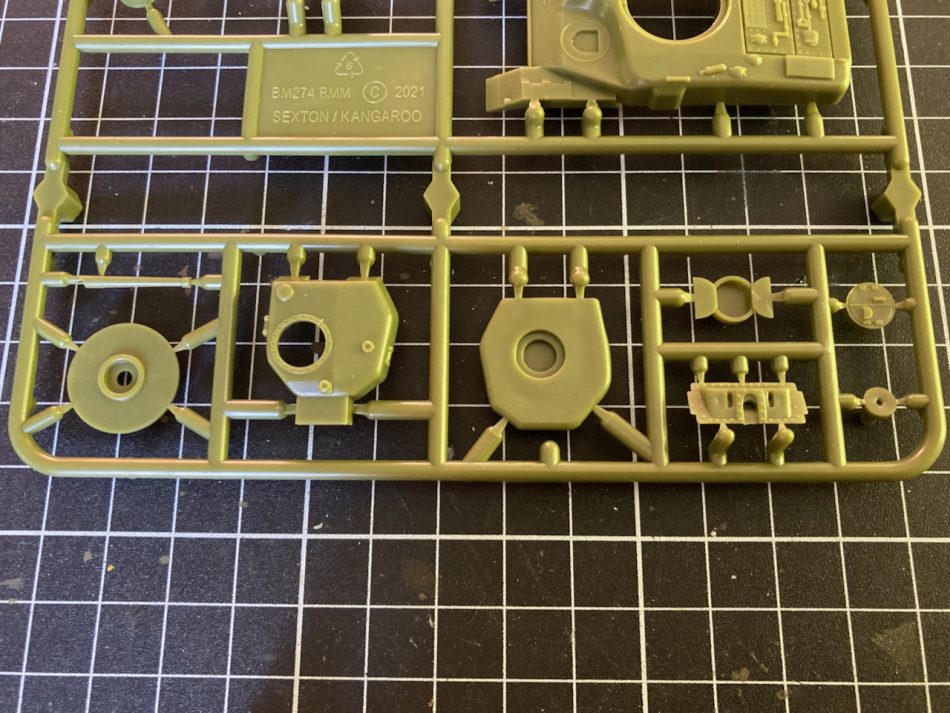
The kit includes some nicely detailed resin crew figures. There are two gun crew for each Sexton, and three infantry passengers for each Kangaroo. While there is the option of having an open commander’s hatch on the Ram, there is no tank commander sprue.
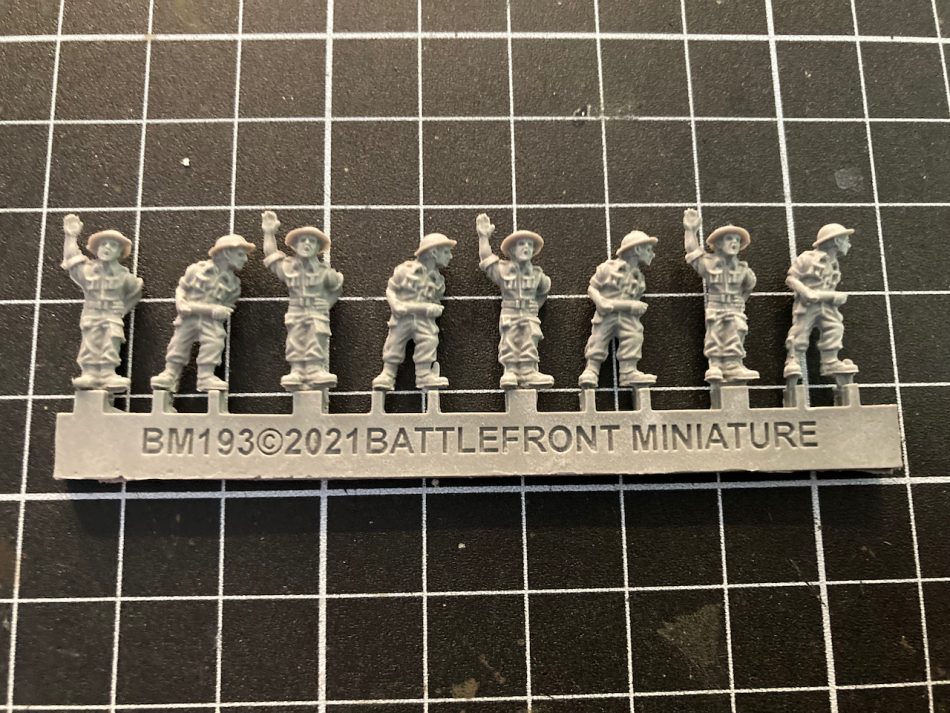
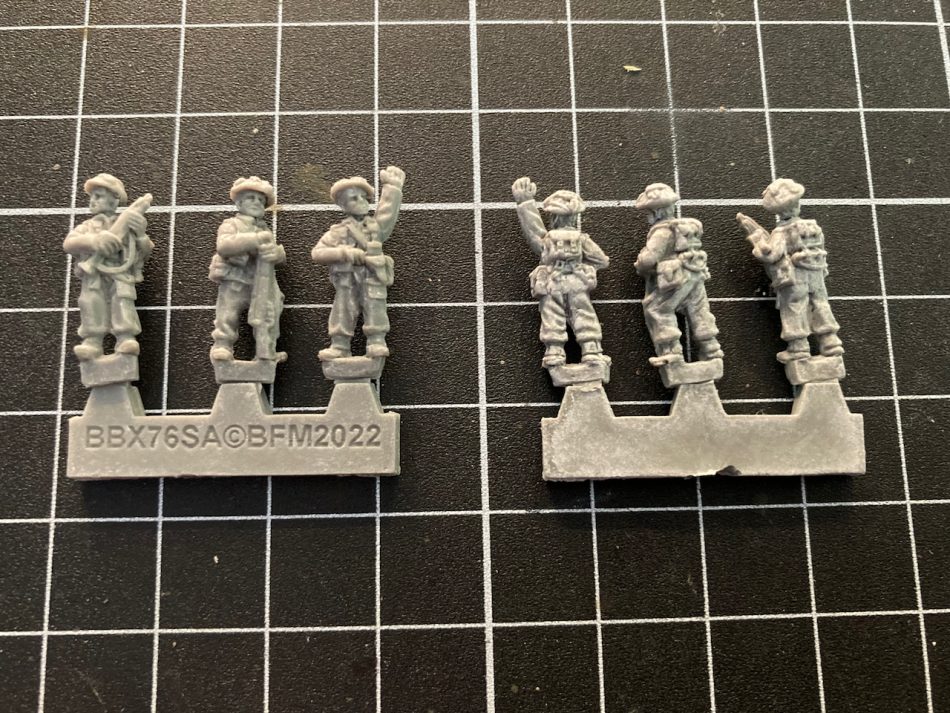
The decal sheet contains a selection of Allied stars and WD census numbers: T- series numbers for the Rams/Kangaroos, and S-series numbers for the Sextons. Unfortunately the T- numbers are in a range that was allocated to Cromwells, instead of the CT159xxx numbers that were used for Rams with this combination of hull and bogies. The S- numbers for the Sextons are fictitious. For the other decals that have been used for the models on the box art, you need to get the separate Late-War British Decal Set.
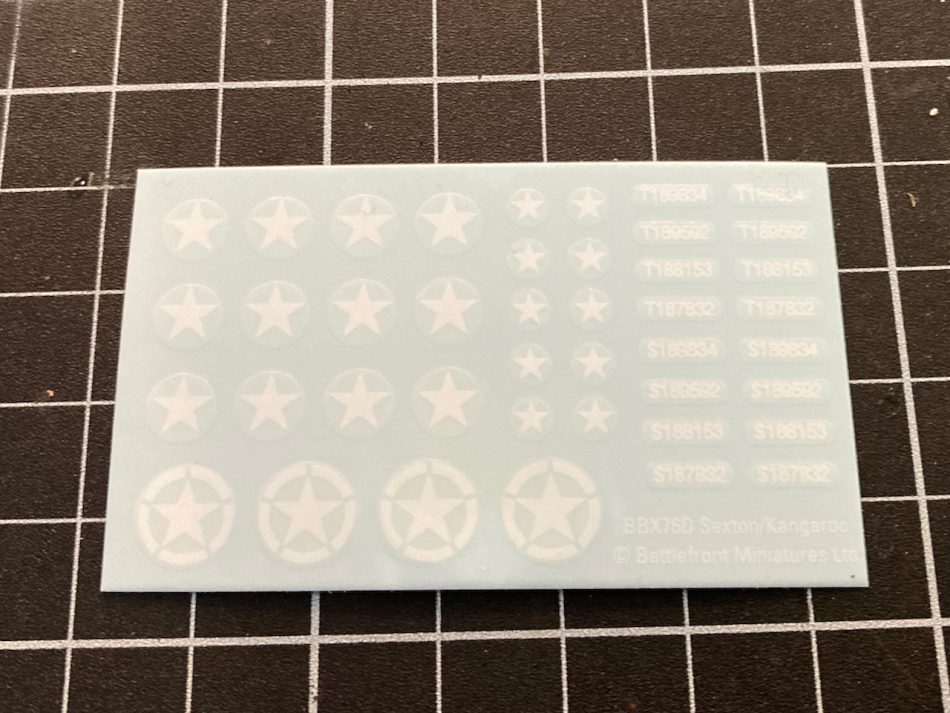
Reflections
I’ve thought a lot about the unhistorical census numbers on the decal sheet. I’m okay with the Sexton numbers that didn’t exist – the numbers look right and it’s not necessary to represent specific historical vehicles. The Ram numbers are more of a problem: as Canadian tanks, their serial numbers really should start with “CT” instead of just “T”.
I probably would have preferred the Ram hull to have been the late Mark II shape, which didn’t have the MG turret, as this would have allowed the kit to be built as a Badger flamethrower tank.
The tracks are interchangeable with the Battlefront Priest kit if you wanted older-style bogies, for example, to build a Ram gun tower. These were used to tow 17pdr guns, and many were also themselves converted to Kangaroos later in the war.
To me, this kit is a bit of a mixed bag. The models are good. They are accurately shaped and well-engineered for simple assembly. Other than the decal numbers, the only downside is the sparse internal detailing. Fortunately, the missing detail is unlikely to be noticeable when the model is on the tabletop.
The fact is that the quality of Battlefront’s recent plastics has been exceptional, and this has set high expectations for all of their new releases.
Despite this, it is great to see these vehicles finally making their return for V4, and I’m looking forward to finishing mine off and getting them into action on the tabletop.
